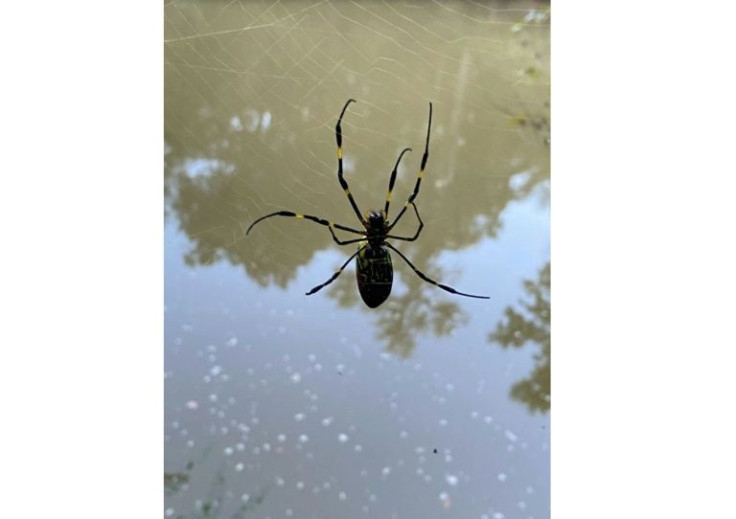Scary-Looking, But Gentle: Invasive Jorō Spiders Are Actually 'The Shyest,' Researchers Say
KEY POINTS
- Jorō spiders are non-aggressive and timid
- Spiders in the genus may be the "shyest ever documented"
- "These spiders are really more afraid of you than the reverse," study lead Andrew Davis says
Massive jorō spiders may look scary, but researchers now found that they're quite gentle. In fact, they're actually quite shy.
Invasive jorō spiders (Trichonephila clavata) look intimidating. They're quite massive with large abdomens and long legs, have brightly colored markings and are now invading some parts of North America after being accidentally introduced in the early 2010s.
There's this idea that they are able to invade so successfully because they have an aggressiveness that can compete with native spiders, a pair of researchers wrote in their study, which was published Monday in Arthropoda. The researchers took it upon themselves to have a closer look at the jorō spiders' personality: Are they really as aggressive as some think?
To find out, the researchers analyzed previous data and also compared the reactions of various spider species to a "brief and harmless disturbance," the University of Georgia (UGA) noted in its release. This included golden silk spiders, garden spiders, banded garden spiders, marbled orb weaver spiders and, of course, the infamous jorō spiders.
The spiders were placed in a white container. After some time, they blew two puffs of air onto individual spiders to see how they would react. They measured specifically how long the spider remained immobile.
"Such air puff tests have been employed in other investigations of spider behavior because the duration of thanatosis (freeze response) is a good proxy for the perceived threat level and/or the individual behavior of the spider," the researchers wrote. "Spiders that remain in a thanatosis state for longer are thought to be 'shyer,' while those that show little or no reaction are thought to be more 'bold.'"
Interestingly, while most of the other spiders remained immobile for less than a minute, jorō spiders and another spider in the Trichonephila genus stayed still for more than an hour. The results are unprecedented, the researchers say, and it suggests the spiders in the genus may be "the shyest ever documented."
"(B)ased on a thorough review of the relevant literature, we could find no other published record of a spider species with such a lengthy startle reaction," the researchers wrote.
"They basically shut down and wait for the disturbance to go away," said study lead author Andrew Davis of UGA. "Our paper shows that these spiders are really more afraid of you than the reverse."
The results of the study shed further light on the true personality of jorō spiders, which have become infamous because of their looks and status as an invasive species. But the truth is that these creatures aren't quite as threatening as they seem.
Jorō spider bites are not considered medically important. This is because the small size of their fangs make it difficult to pierce human skin, and their venom is also considered to be weak, being estimated to be less painful compared to a bee sting.
Why they are so non-aggressive and shy is unclear, the researchers said, but this could be a defensive strategy that helps them to thrive in urban settings. By freezing up in response to all the noise and stimuli, they are able to conserve their energy.
Their invasive nature may not have anything to do with aggressiveness (for they seem to be lacking in it). It's just that they are excellent at reproducing.
"They're simply outbreeding everybody else," Davis said. "It's not because they're displacing native spiders or kicking them out of their own webs."
Further study could dive deeper into the stress responses of Trichonephila spiders, perhaps measuring their heart rates before and after the stimuli, the researchers said. It would also be useful to look further into jorō spiders' ability to thrive.

© Copyright IBTimes 2024. All rights reserved.






















